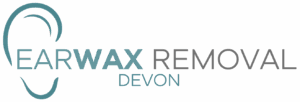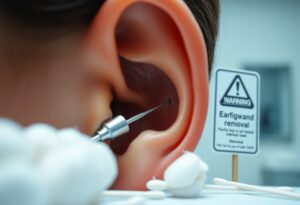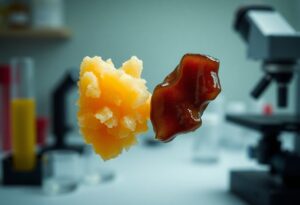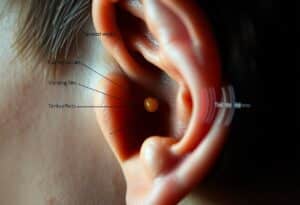Earwax is a natural buildup that serves necessary functions for your ears, but improper removal can lead to serious health issues. You may unknowingly adopt harmful practices that could damage your ear canal or eardrum. In this post, we will highlight five common mistakes people make when trying to clear their ears and provide safe alternatives to effectively manage earwax at home. Understanding these pitfalls will help you maintain your ear health and avoid unnecessary complications.
Key Takeaways:
- Avoid using cotton swabs, as they can push earwax further into the ear canal.
- Do not attempt to remove earwax with sharp objects, which can lead to injury or infection.
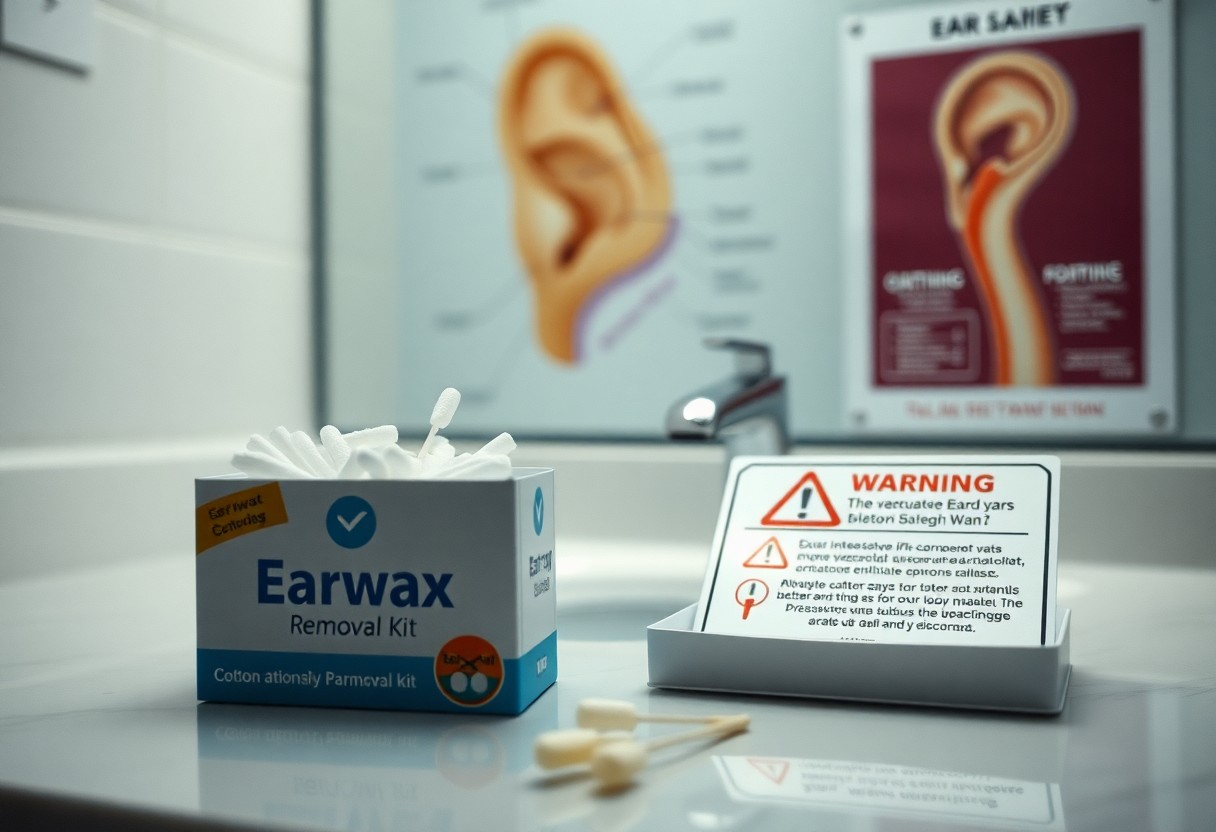
The Perils of Cotton Swabs: A Common Misconception
Misunderstanding Earwax Composition
Earwax, or cerumen, serves as a protective barrier in your ears, trapping dust and debris while providing antibacterial properties. Many believe that earwax is simply a nuisance to be removed, but this misconception overlooks its beneficial role in ear health. The composition of earwax varies from person to person, featuring a mix of secretions from sebaceous and ceruminous glands. Understanding this complexity is vital, as it highlights why removing earwax carelessly can lead to unintended consequences, rather than just eliminating a perceived problem.
Risks of Pushing Wax Deeper
Using cotton swabs often pushes earwax further into the ear canal, leading to impaction. This can obstruct hearing, cause discomfort, and instigate infections due to bacteria being trapped. The design of cotton swabs can create a false sense of safety; they do not effectively remove wax but instead compact it into a denser mass. In fact, studies show that approximately 70% of individuals using cotton swabs might end up with impacted earwax rather than a clean ear, prompting costly and invasive treatments for removal.
Pushing wax deeper leads to several complications. When earwax is forced into the ear canal, it can harden against the eardrum, causing pain and potentially damaging delicate structures. An impacted ear can significantly affect your hearing, resulting in muffled sounds or a feeling of fullness. Furthermore, this can create an environment for bacteria to thrive, increasing the risk of infections such as otitis externa. In some cases, you may experience tinnitus or a persistent ringing in your ears, which could necessitate further medical evaluation and intervention.
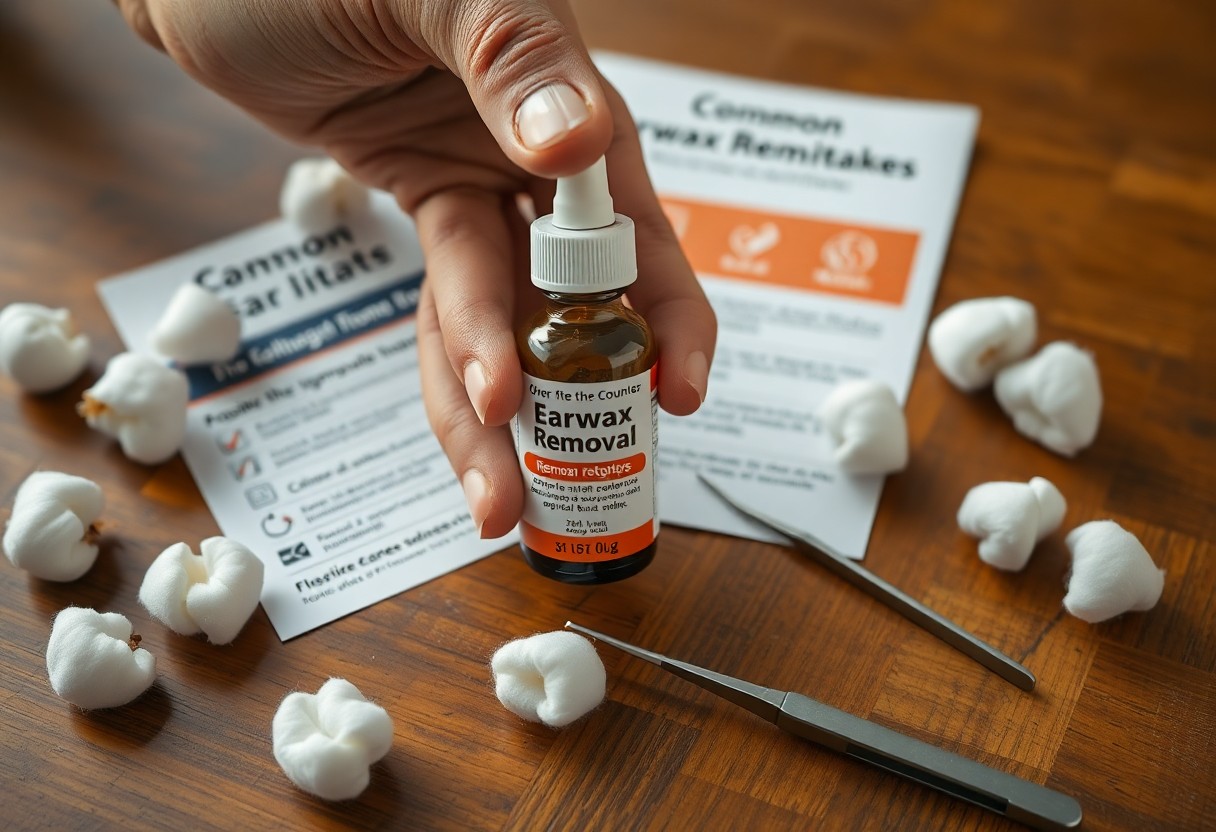
Home Remedies: The Over-the-Counter Pitfalls
The Truth About Hydrogen Peroxide
Hydrogen peroxide is often recommended for earwax removal due to its bubbling action, which is believed to dislodge wax. However, concentrations above 3% can irritate your ear canal, causing inflammation or discomfort. Prolonged use may even lead to infections or disrupt the natural moisture balance in your ears, leaving them susceptible to further wax buildup.
Risks of Using Oils and Other Common Substances
Common oils, like olive or almond oil, are frequently touted as safe remedies for earwax. Though they can soften wax, they also pose risks. Oils can introduce bacteria into the ear canal, potentially leading to ear infections. Additionally, using excess oil may result in more wax accumulation, complicating the very issue you aimed to solve.
Certain natural substances can exacerbate ear problems, especially if used excessively. For example, while olive oil might seem benign, it can trap moisture, creating an ideal environment for bacterial growth. Tea tree oil, often suggested for its antibacterial properties, can cause allergic reactions or irritation in some users. These potential risks highlight the lack of regulation in home remedies, making it important to consider safer, medically supported options for ear care.
The Dangers of Ear Candling: A Risky Alternative
How Ear Candling Works (or Doesn’t)
Ear candling involves placing a hollow candle in your ear canal and lighting the other end. The claimed intention is to create suction that draws out earwax and impurities. However, studies have shown that the method does not effectively remove wax and may even push it deeper into the canal.
Evidence and Myths Surrounding Its Efficacy
While proponents of ear candling assert it can detoxify the body and enhance overall health, scientific evidence is lacking. A review of multiple studies found no conclusive data supporting its effectiveness in earwax removal or health benefits, raising significant concerns about its promoted advantages.
The beliefs surrounding ear candling often blend anecdotal experiences with misconceptions about health. In numerous reported cases, individuals experience burns or injuries to the ear canal from hot wax and candle remnants. Medical professionals consistently advise against ear candling, emphasizing that its risks far outweigh any unproven benefits, reinforcing the idea that achieving ear health should rely on safe, evidence-based practices.
Ignoring Signs of Serious Problems: When to Seek Professional Help
Recognizing Infection Symptoms
Look for symptoms such as persistent ear pain, discharge, hearing loss, or a feeling of fullness in your ear. If you notice fever or swollen lymph nodes, these can indicate an ear infection that requires medical attention. Ignoring these signs may lead to worsening symptoms or complications.
The Importance of Medical Evaluation
A thorough medical evaluation can diagnose underlying issues that at-home treatments might miss. This ensures that conditions like impacted earwax, infections, or perforated eardrums are properly treated. Seeking professional help allows for tailored approaches to your specific situation, significantly reducing the risk of complications and promoting better overall ear health.
Patients often overlook minor symptoms, thinking they will resolve on their own. However, regularly ignoring signs like mild discomfort or decreased hearing can lead to serious consequences, including chronic infections or permanent damage. A healthcare provider can perform a comprehensive examination, utilize diagnostic tools, and recommend appropriate treatments, ensuring your ear health is safeguarded. Immediate attention to symptoms allows for proactive care, reducing the likelihood of escalation and promoting faster recovery.
Improper Tool Usage: What You Didn’t Know About Ear Instruments
The Hazards of DIY Extraction Kits
DIY extraction kits, often marketed as safe and easy solutions, carry significant risks. Many of these kits contain tools designed for professional use, which can lead to injury if misapplied. You risk damaging your ear canal or eardrum when using sharp instruments or suction devices without proper training. In fact, a study found that individuals using such kits experience increased rates of ear infections and injury, highlighting the dangers of attempting to handle earwax removal at home.
Best Practices for Safe Removal Techniques
Opting for safer methods ensures your ears remain healthy. Seek professional help or use gentle techniques like over-the-counter drops formulated for softening earwax. Using a bulb syringe with warm water can also effectively flush out debris without the risks associated with invasive tools. Additionally, earwax should only be removed if it leads to hearing loss or discomfort; regular cleaning is unnecessary.
Implementing these best practices can significantly minimize risks associated with earwax removal. For example, applying a few drops of mineral oil or saline solution can safely soften earwax, making it easier to exit naturally. Schedule regular check-ups with an audiologist to monitor your ear health and avoid using cotton swabs, which can push wax deeper into the canal. Keeping these methods in mind greatly enhances the safety of your ear hygiene routine.
The Role of Earwax in Ear Health: Embracing Nature’s Protection
Understanding the Purpose of Earwax
Earwax, or cerumen, plays a vital role in maintaining ear health by providing a natural barrier against dirt, bacteria, and water. This sticky substance traps debris, preventing it from reaching the eardrum, and also has antimicrobial properties that inhibit infections. Additionally, earwax keeps the ear canal moisturized, preventing dryness and irritation. Your body produces it to protect and nourish your ears, reflecting nature’s design for self-care.
Striking a Balance Between Cleaning and Preservation
While earwax serves crucial functions, over-cleaning can disrupt its protective role. Finding the right balance between maintaining cleanliness and allowing earwax to function naturally is key to ear health. Frequent, aggressive removal can lead to irritation, infection, or even impacted wax, resulting in discomfort and potential hearing loss. You need to understand that your ears are self-regulating; they typically require minimal intervention to stay clean and healthy.
Most people create excess earwax out of a habit formed from cultural beliefs or misconceptions about cleanliness. Regular self-cleaning might seem necessary, but your ears often manage their own wax production. When you do feel the need to clean, gentle methods such as wiping the outer ear with a damp cloth can suffice. Trust the natural process—earwax naturally migrates out of the ear canal on its own. By allowing this mechanism to function without interference, you will effectively maintain ear health while minimizing the risk of complications associated with invasive removal methods.
A Step-by-Step Guide to Safe Earwax Management
| Step | Description |
|---|---|
| 1. Assess Your Earwax | Look for signs of excess earwax buildup such as discomfort, hearing loss, or itchiness. Regularly inspecting your ears can help you stay informed. |
| 2. Choose Safe Methods | Use gentle methods for earwax management, like a damp cloth or a bulb syringe with warm water. Avoid cotton swabs. |
| 3. Softening Earwax | Consider using over-the-counter ear drops or oils like mineral oil or baby oil to soften earwax before any removal attempts. |
| 4. Gentle Irrigation | If necessary, use a bulb syringe filled with warm water to gently irrigate your ears, ensuring the pressure is low. |
| 5. Seek Professional Help | Consult an audiologist or ENT specialist for professional cleaning, especially if you experience pain, significant hearing loss, or persistent symptoms. |
Recommended Methods for Safe Cleaning
Utilizing gentle methods, such as mineral oil or commercial ear drops, can effectively soften earwax for easier removal. Always avoid inserting objects into the ear canal; instead, clean the outer ear with a damp cloth. For excessive buildup, consider warm water irrigation or seeking professional ear cleaning services, which are safer alternatives to home remedies.
When to Consult an Audiologist or ENT Specialist
If you experience hearing loss, persistent pain, or an unusual odor from your ears, a consultation with an audiologist or ENT specialist is necessary. Additionally, if home methods fail to alleviate discomfort or if you frequently have issues with earwax buildup, professional intervention will ensure safe removal and correct any underlying conditions.
If earwax buildup leads to infection symptoms, such as discharge or fever, consulting a specialist is recommended. Persistent cerumen impaction can cause hearing loss, leading to further complications if not addressed. Regular check-ups can help maintain ear health, particularly for individuals with chronic earwax problems or certain medical conditions.
Conclusion
Conclusively, avoiding the five dangerous earwax removal mistakes is important for your ear health. By refraining from using cotton swabs, avoiding overly aggressive methods, and being cautious with home remedies, you can protect your ears from damage. Regularly consult with a healthcare professional to ensure your earwax is managed safely and effectively. Prioritize your well-being by adopting safe ear care practices, thus preserving your hearing and overall ear health.
FAQ
Q: What are the common mistakes people make when removing earwax?
A: Common mistakes include using cotton swabs, inserting objects into the ear canal, using ear candles, over-cleaning, and applying excessive pressure during cleaning.
Q: Why should I avoid using cotton swabs for earwax removal?
A: Cotton swabs can push earwax deeper into the ear canal, leading to blockages and potential damage to the eardrum.
Q: What are the risks associated with ear candles?
A: Ear candles can cause burns, ear canal blockages from wax residue, and may even puncture the eardrum, leading to serious injury or infection.
Q: How often should I clean my ears if I am prone to earwax buildup?
A: Cleaning should be done only when necessary, typically when you notice signs of buildup, to avoid irritation and over-cleaning. Consulting a healthcare professional is advisable for personalized advice.
Q: What are safe methods for earwax removal?
A: Safe methods include using a soft washcloth to clean the outer ear, over-the-counter earwax removal drops, and seeking professional assistance from an audiologist or ENT specialist.
